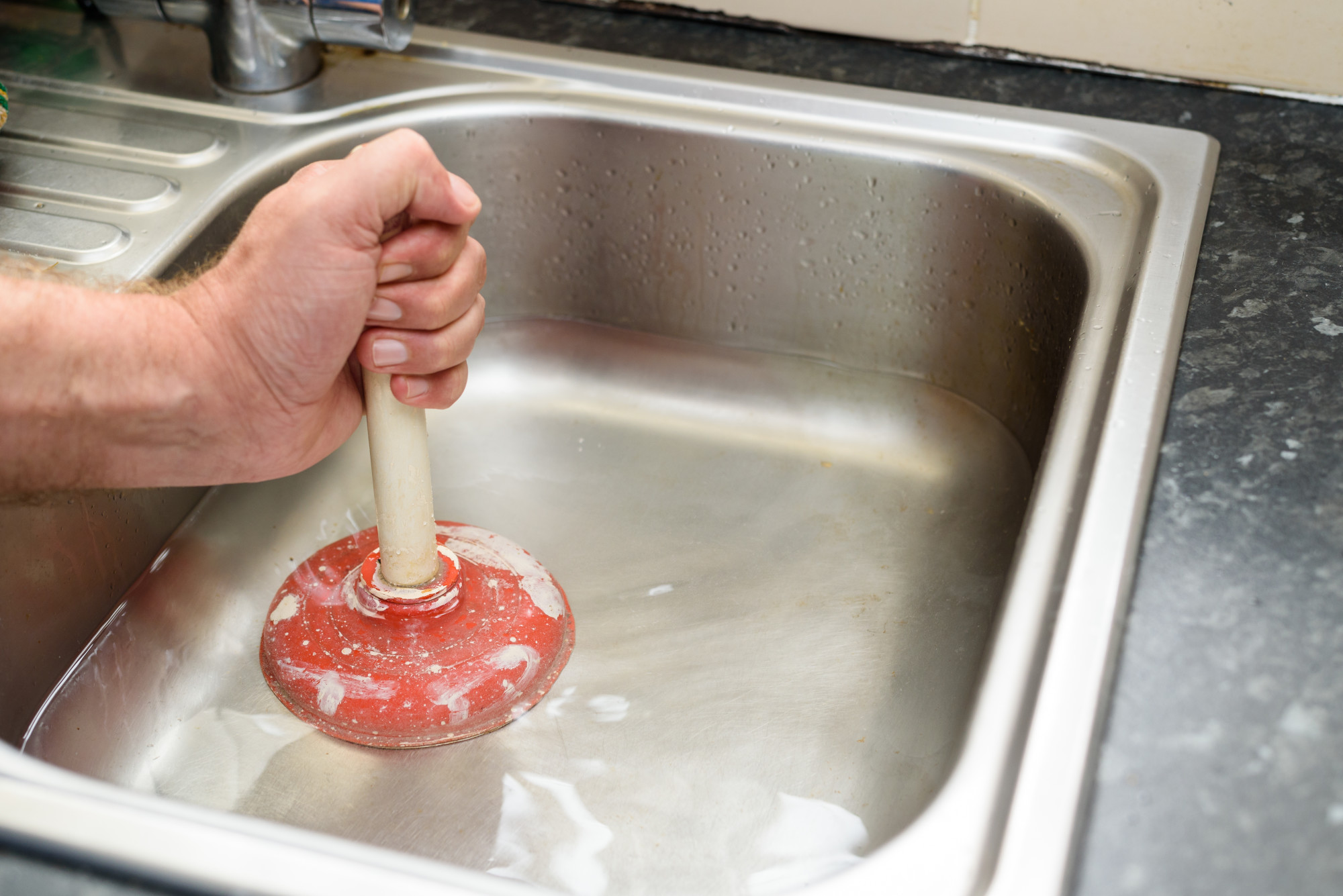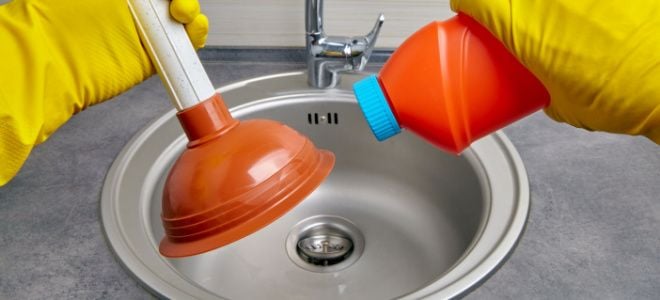Improving Plungers and Drain Cleaner: Pro Methods
Improving Plungers and Drain Cleaner: Pro Methods
Blog Article
The article author is making a few great points on the subject of Here's How to Correctly Use a Toilet Plunger overall in this great article underneath.

Intro
Proper maintenance of family drains pipes is necessary for protecting against clogs and making certain smooth water flow. One of the trick tools in every homeowner's toolkit is the bettor, along with different drainpipe cleaners created to take on stubborn obstructions efficiently. This post checks out just how to make use of plungers and drain cleansers efficiently to keep your drains streaming openly.
Area 1: Understanding Bettors
Kinds of Plungers
There are a number of types of bettors readily available, each developed for various sorts of drains and clogs. The most usual types consist of mug plungers, flange bettors, and accordion bettors.
How Plungers Job
Plungers work on the principle of creating pressure and suction to displace obstructions. When appropriately used over a drain, they create a vacuum cleaner that can pull out particles or break up clogs.
Picking the Right Bettor
Choosing the right plunger depends on the type of drain and the nature of the blockage. Mug bettors are excellent for sinks and bathtubs, while flange bettors are better suited for commodes because of their style.
Usual Blunders with Plungers
Avoiding these blunders makes sure efficient plunging: improper seal around the drain, insufficient pressure, and not clearing bordering debris.
Area 2: Using Plungers Successfully
Preparation
Prior to diving, make certain the bettor covers the drainpipe entirely and develops a tight seal. Clear any noticeable particles around the drainpipe opening.
Technique
Begin with mild diving activities to construct suction. Increase pressure gradually, utilizing a consistent rhythm. Repeat as essential up until the drainpipe removes.
Repairing Tips
If plunging doesn't work, try changing the seal, using oil jelly for a better seal, or using a different kind of bettor.
Area 3: Understanding Drainpipe Cleaners
Sorts Of Drain Cleansers
Drain cleaners can be chemical or chemical. Chemical cleansers utilize solid chemicals to liquify blockages, while enzymatic cleaners make use of natural enzymes to break down organic matter.
Just How Drainpipe Cleansers Work
Chemical cleansers respond with clogs to liquify them, while enzymatic cleansers break down natural materials like hair and oil without harming pipes.
Safety and security Considerations
Constantly use handwear covers and eye defense when making use of chemical drain cleaners. Guarantee adequate ventilation and comply with manufacturer guidelines very carefully.
Eco-Friendly Alternatives
Consider using vinegar and cooking soda or enzyme-based cleansers for environmentally friendly alternatives that are more secure for pipes and the setting.
Area 4: Using Drain Cleaning Company Effectively
Application Methods
Put chemical cleansers straight right into the drainpipe opening. Allow them to work for the recommended time before flushing with hot water. Enzymatic cleaners ought to sit overnight.
Precautions
Avoid mixing different sorts of cleansers, as this can generate hazardous fumes. Never ever make use of chemical cleansers combined with a bettor, as splashing can happen.
Taking Care Of Persistent Blockages
For persistent obstructions, take into consideration utilizing a plumbing serpent or calling a professional plumber to stop damage to pipelines.
Final thought
In conclusion, comprehending how to utilize plungers and drain cleansers effectively is crucial for keeping healthy and balanced plumbing systems. By choosing the right devices and strategies, house owners can tackle minor obstructions and stop major pipes problems down the line.
How to Use a Plunger to Unclog a Drain
The humble plunger is a simple yet effective tool for breaking clogs in sinks, tubs and toilets. This handy tool is easy to use. You can make the most of its power if you understand how it works. Ready to dive in? Here’s what you need to know.
Safety First!
Never use a plunger with drain chemicals. Water will splash as you work, and the chemicals can spatter, burning skin and eyes. It’s a good idea to use rubber gloves and wear safety goggles when you work on a clog.
Choose the Right Tool for the Job
Plungers come in two different styles. Sinks, bathtubs and showers require a cup plunger. Like its name suggests, the rubber end is shaped like a cup. Use a flange plunger on toilets. These plungers have a rubber funnel extending from the cup. A plunger needs to be big enough to cover the drain.
Ready, Set, Plunge!
Coat the rim: Coat the plunger rim with petroleum jelly. This helps make a better seal.
Block outlets: Hold a wet rag over nearby outlets such as the overflow vent or the drain in a second sink.
Release air: Insert the plunger at an angle into the water. Water will displace air in the cup. A water-filled cup is more forceful than one filled with air.
Keep the plunger upright: Hold the plunger perpendicular to the drain. Use fast, forceful strokes, but make the first stroke gentle. The first stroke can create a splash if the cup still contains air. Thrust the plunger 15 to 20 times.
Snap off the plunger: The final stroke should be a strong upward motion that ends when the plunger snaps off the drain.
Repeat the process: you may need to repeat this sequence several times. When the water drains away, your work is done. High-five! https://plumbernw.com/blog/how-to-use-a-plunger-to-unclog-a-drain/

Application Methods
Put chemical cleansers straight right into the drainpipe opening. Allow them to work for the recommended time before flushing with hot water. Enzymatic cleaners ought to sit overnight.
Precautions
Avoid mixing different sorts of cleansers, as this can generate hazardous fumes. Never ever make use of chemical cleansers combined with a bettor, as splashing can happen.
Taking Care Of Persistent Blockages
For persistent obstructions, take into consideration utilizing a plumbing serpent or calling a professional plumber to stop damage to pipelines.
Final thought
In conclusion, comprehending how to utilize plungers and drain cleansers effectively is crucial for keeping healthy and balanced plumbing systems. By choosing the right devices and strategies, house owners can tackle minor obstructions and stop major pipes problems down the line.
How to Use a Plunger to Unclog a Drain
The humble plunger is a simple yet effective tool for breaking clogs in sinks, tubs and toilets. This handy tool is easy to use. You can make the most of its power if you understand how it works. Ready to dive in? Here’s what you need to know.
Safety First!
Never use a plunger with drain chemicals. Water will splash as you work, and the chemicals can spatter, burning skin and eyes. It’s a good idea to use rubber gloves and wear safety goggles when you work on a clog.
Choose the Right Tool for the Job
Plungers come in two different styles. Sinks, bathtubs and showers require a cup plunger. Like its name suggests, the rubber end is shaped like a cup. Use a flange plunger on toilets. These plungers have a rubber funnel extending from the cup. A plunger needs to be big enough to cover the drain.
Ready, Set, Plunge!
Coat the rim: Coat the plunger rim with petroleum jelly. This helps make a better seal. Block outlets: Hold a wet rag over nearby outlets such as the overflow vent or the drain in a second sink. Release air: Insert the plunger at an angle into the water. Water will displace air in the cup. A water-filled cup is more forceful than one filled with air. Keep the plunger upright: Hold the plunger perpendicular to the drain. Use fast, forceful strokes, but make the first stroke gentle. The first stroke can create a splash if the cup still contains air. Thrust the plunger 15 to 20 times. Snap off the plunger: The final stroke should be a strong upward motion that ends when the plunger snaps off the drain. Repeat the process: you may need to repeat this sequence several times. When the water drains away, your work is done. High-five! https://plumbernw.com/blog/how-to-use-a-plunger-to-unclog-a-drain/

Hopefully you liked our topic about Here's How to Correctly Use a Toilet Plunger. Thanks a lot for taking time to browse our article. Are you aware of someone else who is interested in ? Feel free to promote it. Thank-you for going through it.
Contact Report this page